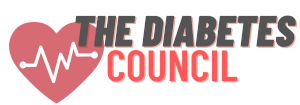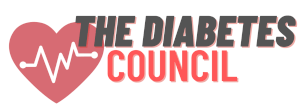
Diabetes management at home is an important way of controlling your blood sugar levels without the help of an expert.
In that sense, you are in control of your diabetes on a daily basis. However, the American Diabetes Associations' recommends that a person with diabetes should get their A1C tested by a doctor at least two times a year. The test will give you a picture of your journey with diabetes as a whole. Now, once you do get the numbers, what do you do with that information?
If you are on the right track, you will continue doing whatever it is that has been working so far. you feel encouraged! However, if the numbers are not what you and your health care provider were expecting, it is imperative that you embark on the path to lowering them so you can avoid any diabetes related complications in the future. The task can be daunting and overwhelming.
We have rounded up 37 experts to share tips and ways that will help you in lowering your A1C levels and keeping them that way. The wisdom they share with us today will help you take those little steps towards a healthier lifestyle.
[accordions id="6343"]
1. Sharon Castillo

In a recent study published by the University of Toronto, it was shown that cinnamon has properties which can reduce blood pressure, especially for those who have prediabetes or type 2-diabetes.
Hypertension or high blood pressure is common among those who have prediabetes and type-2 diabetics. High blood glucose levels create oxidative radicals which can damage the arteries.
I recommend reading the following articles:
The damage to the arteries can result into the scarring of the blood vessels. The scarring builds up plaque which reduces the size of the blood vessel. The reduction in the size of the diameter increases blood pressure.
While not all of cinnamon's mechanisms of action are understood, there is research which demonstrates that Cinnamon can reduce A1C levels. Damage to the arteries is reduced because of the reduced blood sugar levels.
2. Jeffrey Dachis

Here are some tips:
- Test your blood sugar. We can't fix what we can't see. If your A1C is not where you want it to be, try testing more often to get a better picture of what your blood sugar levels are doing throughout the day.
- Use tech as a tool. You can also talk to your doctor about ordering a Continuous Glucose Monitor (CGM) which senses glucose levels once every few minutes without a fingerstick.
- Look for patterns. Is your blood sugar highest in the morning before breakfast? In the evening after dinner? Once you have the glucose readings from your meter and/or CGM, you can begin to look for problem areas and then make a plan to tackle them. Ask your doctor or diabetes educator for help spotting patterns if needed.
- Eat fewer carbs. While we do need some carbs, we do not need as many as have been recommended in the past. This is especially important for people with diabetes, since carbs are the main reason why blood sugar levels go up in the first place. You may see improved blood sugars by reducing your carb intake (fewer highs and fewer lows too!).
- Increase activity. Physical activity makes us more sensitive to insulin, meaning it's easier to lower blood sugar levels. The effects of activity last many hours afterwards too, so even a little bit of activity can go a long way towards lowering your blood sugar readings and your overall average.
- Watch your weight. Being overweight makes it more difficult for insulin to do its job of lowering blood sugar levels. Eating healthy and staying active can help keep weight in check (and they also help blood sugar levels as well!).
- Take meds as directed. Diabetes medications help blood sugar levels in a variety of ways, and taking them as directed ensures they are as effective as they can be.
- Adjust meds when needed. Overall blood sugar trends can change over time- what worked last year may not work as well this year. Talk to your doctor if you notice higher readings, especially if you've already worked on reducing carbs and increasing activity. A different medication, a tweak in timing, or a simple dose change may be all it takes to get you to your goal A1C. Continuing to watch for changes in blood sugar trends can help you know when it's time.
- Manage stress. For most people with diabetes, stress hormones cause blood sugar to surge. Stress can come in many forms, including mental, emotional, and physical stress (like getting sick or not sleeping well). Taking steps to reduce stress and to manage stress when it does occur can help keep your A1C in check.
- Get support. Connect with other people who “get it,” whether it's an in person support group or an online community. Finding support can not only reduce stress and help you feel empowered, it can also be a sounding board of practical, everyday tips and tricks to make living with diabetes easier while improving blood sugar levels.
- Use your health care team. Diabetes is never a do-it-yourself condition. Your health care team plays a huge role in how easy or difficult it is to lower blood sugar levels over time. Can you be seen relatively soon if an issue comes up? Does your doctor help make dose adjustments in between visits? Do your providers listen to your concerns and take them into consideration when making treatment decisions? If you feel like your health care team has not made your diabetes control a priority, advocate for yourself and consider finding a team that does.
- Ask for “DSME”. Diabetes Self-Management Education is an in-depth, individualized review of all the things that go into diabetes care. Even if you've had diabetes for a while, diabetes education can provide insights to help lower your blood sugar. Start by asking for a referral from your doctor. And if possible, look for a diabetes education program that is accredited by the American Diabetes Association (ADA) or American Association of Diabetes Educators (AADE), like One Drop | Experts.
Just remember: reaching your goal A1C is great, but having frequent episodes of low blood sugars puts you at risk. Talk with your doctor if you're having low blood sugars often, and discuss different ways of lowering A1C without frequent lows.
3. Max Szadek

GLAM MORE, FEAR LESS! I recommend starting a ‘Sugar Lips' Log book to lower your A1C. Make it a goal to check your blood sugars after you reapply your lipstick throughout the day. Jot down the time of day, your medication, and any changes in food, activity, illness and/or stress related to your blood sugars. When you stop and think that most women apply their lipstick 4 or more times in one day the resulting ‘sugar lips' data could prove to extremely beneficial to you and your doctor at your next appointment. I bet both of you will be smiling! And guess what? A new tube of lipstick is a healthy way to reward yourself for lowering your A1C.
4. Karen Pennington

It is important to remember that the A1C is a 3 month average, so when you get your A1C result from your provider, you should count backwards 3 months to know the date range that the A1C covers. If your A1C is not at or below the 7% recommended target, ask yourself if there have been any unusual circumstances that could have elevated your A1C. For example, having a steroid injection (or taking prednisone orally) or running out of your diabetes medication. If the answer is "no", look back and your blood glucose log and see if the numbers you have recorded are in agreement with the A1C level. If not, the reason could be that you are not testing often enough or that you are only testing once per day such as in the morning when you are fasting. After meal testing (about 2 hours after eating) is helpful to more accurately predict your A1C.
If your A1C is elevated, you should ask your provider for a referral to a diabetes educator. If your A1C has been elevated for several visits in a row, you should ask your provider for a referral to an endocrinologist.
Keeping your A1C at or below target will help ensure less blood vessel damage and fewer diabetes complications in the future, so make sure you are proactive in getting your A1C to target.
5. Dr. Barry Sears

There are two ways to lower HbA1c:
- reduce the levels of glucose in the blood, and
- reduce the formation of free radicals.
The high levels of glucose come from insulin resistance in the muscle cells and the increase in free radicals comes from a lack of polyphenols in the diet.
Practical guidelines for reducing the levels of HbA1c long-term, sustainable basis is to follow a calorie-restricted diet (1,200 to 1,500 calories per day) containing adequate protein (90-110 grams of low-fat protein per day), moderate amounts of carbohydrate (130-150 grams of low-glycemic carbs per day) and a low levels of fat (40-50 grams of primarily monounsaturated fat per day).
These are essentially the dietary guidelines of both the Joslin Diabetes Center at Harvard Medical School and also the Zone Diet. To reduce the formation of free radicals, you want to make the vast majority of carbohydrates coming from non-starchy vegetables and limited amounts of fruits as these are rich in polyphenols without excess levels of carbs (as in whole grains). 10 servings per day (8 of vegetables and 2 of fruits) per day would provide adequate levels of polyphenols.
6. Amanda Goodwin

Consistency is key to lowering your A1C! This is where working with a health coach may be helpful. Each day and with each meal you have the opportunity to change your health for the better!
You can do this by daily improving your diet, and watching your portion size. I would encourage you to have a protein breakfast, rather than a carb loaded breakfast. Do your best to manage your stress level with meditation or yoga. Get a good night's sleep, as it has been shown a poor night sleep increases the next day's glucose level. Last but not least exercise daily. A simple 20-30 minute walk is very effective at managing your glucose levels. (And it's free!)
Purchase a blood glucose monitor and test how you personally react to foods. You need to learn your “carb tolerance”, the amount of carbs your body can handle. Check your blood sugar prior to your meal and record this number. Follow up with a test at 1 hour, 2 hours, and 3 hours after your meal. (Record each number.) You need to recover to your original number (Before eating) by hour 3. You do not want to get higher than 140 after a meal…this is the upper end of the range. Try to achieve 120 or lower. 150+ causes arterial damage. By sticking with lower glycemic foods, you will be controlling your numbers better and causing less inflammation and less damage to your body.
An often overlooked resource would be to have your thyroid and HPA Axis (adrenals) checked, as they may be a culprit in higher sugar numbers. Someone like myself can provide you with a 4 point saliva cortisol test and a full thyroid panel. A full thyroid panel includes TSH, T4, T3, RT3 and the following antibodies TRAb, TPO, TG/TGA, TSI.
Check with your doctor as some medications can raise blood sugar. Some examples could be asthma meds, cold meds, blood pressure meds, and thyroid meds.
After taking a thorough health history, I may also suggest certain herbs and herbal teas to help my clients lower their blood sugar and control their sugar cravings.
7. Francine M. Kerber, MS, RD, CDE

Lowering A1c%:
Many people have forgotten or were never properly taught about this quarterly (usually every 3-4 months) blood test. I like to remind clients that the A1c measurement is a rolling and weighted average. The most recent blood glucose numbers "count" more than results from months prior. I also find clients very surprised at an unexpectedly high result when they have not noticed significant changes in the BG tests at home or noticed more symptoms.
Here are a few ideas I share with clients once we are clear on the definition and goals:
- Check home BG at various times of day 1 or 2 times per week.
- Avoid only checking fasting BG, shake it up to learn more about how your BG recovers from a late dinner or a skipped meal.
- Don't skip checking your BG when you know it will be "bad" - this is an opportunity to learn, not a time to feel ashamed.
- Spot Check Your Diet - log your food intake or closely count carbs 1 day each week (make it a different day each time for better results).
- Get Moving - take 5-10 minutes after most meals to move more. The activity helps both medication and your body to work better.
- If medication changes occur, check BG more often until you and your healthcare team know how the change affects your BG.
Remember that learning more about how your BG responds to changes in schedules, stress or new medication is data that will help lead you and your healthcare provider (MD, RD or CDE) to maintaining a more even and healthy blood glucose result.
8. Joanne Laufer Milo

Tips/ways I use to lower my A1C:
While A1c is just one part of the picture for better diabetes management, it is an important range and goal. When the DCCT trials reported that the lower the A1c, the better. But we now know that having an A1c too low often indicates an unhealthy number of low blood sugar episodes, which is equally dangerous.
I try to keep my A1c in what I call my sweet spot: 6.2-6.7 … and somehow that has been working.
Here's what I try to do:
I rely on my CGM, particularly after meals, watching for rapid rises (160 and arrow upward or straight up), possibly because of miscalculation of carbs or hidden sugars, etc.
- If I see a steady rise (upward arrow), I will give a correction bolus.
- If my rise is fast and showing no sign of leveling off (1 or 2 arrows straight up), at 200 or above, I will often use Afrezza inhalable insulin, 4u cartridge, as a “rescue” dose. That usually levels and gently lowers my bg back into the 120-150 range.
I wake up with CGM alarms during the night.
- If I am running high, I will give a correction bolus, which is set at about 50% of my daytime correction bolus. I do not want to drop low, just stop and gently low the rise.
- If I am dropping low, I will take sugar and possibly put in a temp basal of 0% for ½ hour.
I try to avoid stacking insulin because then I am yo-yo-ing and feel awful.
As I mentioned, A1c is only part of the plan. My bigger concern in the variability … standard deviation of my blood sugars. That means how much my blood sugars swings low to high to low. I want fewer swings and lower highs and lows.
- Before going on my pump and certainly before CGM, my standard deviation was about 75.
- I am now around 35.
- If I wanted to work really hard, I would eat even less carbs and bring my standard deviation to about 25.
And finally, I know I can lower my A1c by eating a low carb diet. I'm not willing to be that strict. But I do try to hold my meal carbs to under 35 at a time. Seems that carbs are my enemy – can't easily live with them and can't easily totally eliminate them.
My last A1c was 6.4. I'm smiling!
9. Dr. Shira B. Eytan, MD

A1C is a good test to measure blood glucose, on average, for the prior 2-3 months. However, diabetics wide fluctuations in blood glucose and frequent episodes of hypoglycemia may have a normal or low A1C, though they are not well controlled. Therefore, the goal is to achieve a good A1C without significant hypoglycemia. This can be done by:
- Watching your diet, and having balanced meals.
- Taking your medications as prescribed by your doctor.
- Checking blood glucose regularly, and as directed by your doctor.
- For type 2 diabetes, modest weight loss can have a significant impact on A1C (5-10% of body weight).
- Daily exercise! Avoid sitting for prolonged periods.
- If available to you, a continuous glucose monitor has been shown to improve A1C control with less fluctuations in blood glucose. These are available to Type 1 diabetics, and occasionally to Type 2 diabetics. Consult with your endocrinologist to see if if this could be the right fit for you.
10. Marianne Hutton

Four ways to lower your A1C:
- Lose weight. A weight loss of 10 percent of your body weight will do wonders to lower your A1C. For many people that's 10-15 lbs.
- Decrease your food intake by eating ⅓ of what you normally eat. Make some simple changes in your food habits: Cut out calorie containing drinks such as juice, soda, lattes, beer and wine. Fill up on high fiber vegetables and water. Get busy to distract yourself from eating. Keep a food journal to become aware of your calorie, fat and carbohydrate intake. See a Registered Dietitian, Certified Diabetes Educator for assistance with food habit management and behavior modification.
- Know what your diabetes medications do; how they work. Know if the medication you are on causes weight gain or weight loss. Ask your health care provider if they can prescribe one that causes weight loss. Work with a CDE to learn all you can about the different classes of diabetes medications and which core diabetes defects they target. There are at least 8 core defects of diabetes.
- Test your after meal blood sugar and don't let it rise above 130-140. If it does, know that exercise will lower it. And eating less the next time will help too.
11. Joan Trute, MA, RD, CDE

Eat more fruits and veggies, do some sort of physical activity work up to 150 minutes a week limit packaged foods and take all your medicine for diabetes. Try to reduce stress with deep breathing or connecting with nature.
Also, use the plate method: ½ plate non starchy veggies, ¼ plate protein(fish, chicken, lean beef, etc.) and ¼ plate whole grains. Stay away from sweetened beverages. Switch to water, coffee and tea instead.
12. Amy Campbell

First, talk with your doctor, diabetes educator, and/or dietitian (ideally, all three!). Diabetes self-management requires a team approach; you're the captain of your team and your team members are there to support you. Lowering your A1C usually requires a multi-pronged approach. Start off with lifestyle measures: a healthy eating plan that's individualized to your needs and preferences; regular physical activity - choose an activity or two that you enjoy doing and will do consistently; weight control - reaching and staying at a weight that's healthy for you; stress management - using techniques such as deep breathing, exercise, meditation, yoga, or counseling, if necessary, to help you keep stress under control; and getting adequate sleep (not too much, not too little!).
Second, revisit your diabetes medication plan. This is a discussion to have with your team. Do you need to start taking medication? If you already take medication, does the dose need adjusting, or do you need to add a medication? Sometimes lifestyle measures aren't enough to get your A1C to your target. Finally, stay on top of your blood sugars, which means checking them. Decide, with input from your team, how often is reasonable for you to check your blood sugars with your meter. Then, share your results with your team to tweak your treatment plan and help you reach your A1C goal.
13. Diana L. Malkin-Washeim, PhD, MPH, R.D., CDE, CD-N

To lower an A1C there needs to be a few components, such as the following:
- Activity. If people incorporate any type of daily exercise, this will build up lean muscle mass, which will decrease insulin resistance, help with weight loss and/or maintenance, and help with the flexibility of food consumption.
- Eating a well balanced and small meals and snacks. Keeping all food choices colorful, green and leafy, fruity, high protein, whole wheat or other high fiber grains (quinoa, barley, spelt, triticale, etc.) and less starchy type foods.
- To limit or eliminate sugary beverages. Not only does drinking sugary beverages add empty calories but they contribute to elevated triglycerides and high blood sugars and ultimately contribute to an elevated A1C in the short and long term.
- To maintain a social support with family and friends. To move from being serious to light and fun embraces a social support, which helps with refocusing from always thinking about diabetes, and problems to a life of less stress and joy.
- To check your blood sugars regularly. Checking blood sugars helps not only your health care provider in making the appropriate dose adjustments to your medication but helps you in figuring out how your activity or lack of activity and the types of food that may be affecting your blood sugars.
- Keep your appointments. By keeping your appointments with your doctor and certified diabetes educator this enables you to be part of your team. The team is there for you to help with your diabetes management.
14. Dr. Carl Knopke, MD

As far as tips for lowering your HgA1c, I have several suggestions. The most obvious ones are the same ones that are required to lower your fasting blood sugar. These will include things such as decreasing your intake of sugar sweetened beverages and refined carbohydrates. You should also watch foods with a higher glycemic index. These are foods that have sugar that can rapidly be absorbed.
Consider things such as rice, potatoes and sweet fruits. As your fasting blood sugar starts to come under good control, which I usually consider to be a fasting blood sugar of less than 90, you may be frustrated by the persistantly elevated HgA1c. Gettiing your initial number down from a high of say 10, is comparatively easy using, diet, exercise, and medications. However, once your HgA1c is getting into the 6.5-7.0 range, you may notice that decreasing your fasting blood sugar further is not working to lower your HgA1c. That is because in the lower range of your HgA1c, your numbers are more of a reflection of your post-prandial (after meal) blood sugar and not just your fasting blood sugar.
What I usually tell my patients to do is to perform the occasional experiment on themselves. If you really want to know what happens to your blood sugar after a meal, then check it. Here is how: Check your blood sugar right before the meal in question and then 90 minutes after starting the meal. Compare this change to a meal that you know does not contain any carbs, think eggs and ham, which should really not affect your blood sugar at all. If your blood sugar is going up by 30 points or more, this is really too much and you need to think about where those carbs are coming from in the meal.
The other trick that goes with this one is knowing how to save your glucose sticks. I usually tell my patients to only check their fasting blood sugar every 2-3 days if the numbers have been looking good. This will allow you to save a few sticks to do experiments on yourself.
15. Dr. Phyllisa Deroze

The best way to lower my A1C has been to remain consistent with eating by the plate method and or carb counting and walking after meals, especially dinner.
I find that if I remain consistent, then one or two high carb meals won't kill me.
I try to avoid bringing foods into my home that are high in carbs and are dangerously delicious. Sure, you tell yourself "I will eat 1 today and 1 tomorrow," but if it's your weakness, then you are only fooling yourself. The entire box or bag will be gone in a day or two. So, I try to shop with the mindset of someone who is trying to lower their A1C.
Walking in is my best friend. I may not walk 10,000 steps a day, but I make sure to walk after every big meal. This helps my body digest the food and glucose which makes my A1C.
16. Valerie Goldstein, MS, RD, CDE, CDN

The key to maintaining a consistent normal A1C is to maintain consistent daily blood sugar levels. Three tips that will enable you to lower A1C are:
Use a journal to map out and analyze blood sugar and food/exercise relationships. Frequently monitor blood sugar throughout the day; pre/post meals and activities, until consistent blood sugar numbers are achieved, then rigorous testing is not necessary. Once your numbers are consistent spot checking blood sugar is a viable option. Analyze which foods are detrimental to blood glucose levels. Make lifestyle changes accordingly.
One hundred percent of any type of carbohydrates, good or bad will send daily blood sugars skyrocketing similarly to sugar. Keeping carbs between 25-50 grams total for the day will help prevent glucose excursions and promote steady state blood sugar.
Exercise and nutritional supplements should be used as first line of therapy before medications. Both exercise and nutritional supplementation can act as insulin sensitizers just like popular medications such as metformin without the adverse side effects. Using insulin or oral hypoglycemic agents may make blood sugar control more difficult if timing of meals is not strictly followed. Matching medication and its onset of action with food is a difficult task.
17. Anna Norton

If using a continuous glucose monitor, lower the "high" alert, so you can get ahead of highs before they get too high. By doing this, you will spend less time in the high zone and lower A1c in a safe way.
Run basal tests to ensure you are injecting the proper amount of insulin. A correct basal will hold blood sugar steady without the aid of food, exercise or bolus insulin. Integrated Diabetes Services offers advice on how to properly basal test.
Take note of what particular foods do to your blood sugar. By observing this, you will be able to better plan insulin dosing, timing of medication, and exercise. Not all carbohydrates and/or fats are created equal!
Eat more whole foods. Processed foods can cause a spike in blood sugar that can linger for hours.
18. Andrew P. Mandell

It's important for the diabetic patient to understand what diabetes is, how it affects your body, and what steps can be taken to minimize (if not eliminate) the negatives.
In this article I will reduce the many scientific and medical terms to a basic understanding that will serve you well.
1. Diabetes, very simply put, is the result of when the food we eat which, when digested and converted to energy, isn't properly absorbed and/or distributed throughoutour bodies via the bloodstream (glucose [blood sugar]). This “glucose” will remain in our bloodstreams and won't feed the 60 trillion cells in our bodies until provided the key to release it– the hormone, “insulin”.
In order for this process to work properly, it's necessary for the hormone “insulin” to kick in. Insulin is produced by a vital organ in our bodies, the Pancreas, which also produces digestive enzymes, and more. Normally, it occurs naturally in the correct amounts in response to the food we consume. Not the case when you have diabetes.
Diabetics need to take special care to make sure the proper amount of insulin is released into our bodies to properly balance the glucose – not too much and not too little. So, depending on the level of malfunction, astrict diet control, oral medications and/or insulin injections are required to produce this delicate balance.
2. When this delicate balance is NOT reached, then, over a period of time (months to years), damage will absolutely occur to ALL the organs in our bodies and cause serious medical problems.These problems which, if not professionally addressed, will result in irreversible damage, such as: blindness, amputation, kidney disease and a whole lot more. Eventually, it will cause premature death!! It's important to note that diabetes is a medical issue first, and MUST be so addressed!!!
3. However, the picture doesn't need to be so bleak. Fortunately, there are measures we can all take to minimize, if not totally eliminate, the medical realities that will surely occur if we don't follow some basic rules.
- Diabetes is a medical issue and must be addressed by a qualified specialist: an Endocrinologist or an Internal Medicine specialist.
- Diabetes is a metabolic disorder which requires proper nutrition. For this guidance your doctor will arrange for you to sit down with a Registered Dietician or Nutritionist.
- Proper exercise is also necessary. Your doctor will advise you on working with a certified Physiologist to make sure an exercise program is designed to meet your individual needs and abilities.
Once these three steps are in place (a,b,c), you are now responsible to make sure to follow the program. And, to confirm that you're in compliance, the following measures are very important to follow:
- See your doctor every 3 months for a complete medical evaluation. I have faithfully done this since 1985 when first diagnosed. If something in the reportindicates any need(s) to be adjusted, it's easy to fix, at this point.
- Get a glucometer and check your glucose levels frequently during the day. This test will give you a snapshot of your glucose level(s) for that moment in time and, depending on the results, will alert you to make any adjustments in your behavior.
- The A1C TEST: This is the all-important blood test that should be performed every 90 days. It's done in a lab (or your doctor's office) and provides the critical information you and your doctor need to know about how well you're following your prescribed regimen. The A1C TEST measures the cumulative effects of your glucose levels for the previous 90 days with a heavier emphasis on the time (4-8 weeks) closest to the time of the test.So, by taking care of your diabetes on a daily basis, the incontrovertible cumulative results will be reflected in the A1C TEST.
And, just so you know, nobody is perfect and we all “fall off the wagon”. When that happens, it's even more important to see your doctor every 90 days. Your doctor works for you and will always be there to help you.
Also, important to realize: the diabetic lifestyle is the most perfect lifestyle to live:
- see your doctor regularly;
- eat properly; and
- get proper exercise. If everybody followed this regimen, whether they're diabetic or not, you'd see all kinds of diseases be drastically reduced in numbers of cases and their severity.
Further, for those at risk for developing diabetes, the A1C TEST will tell you if you have diabetes years in advance of the symptoms showing up. Early identification is key to avoiding the dire consequences of the disease.
[NOTE: There are 1440 minutes in each day. The average visit to your Endocrinologist (or Internal Medicine specialist) is 16 minutes per visit (or, 64 minutes per YEAR)!! Therefore, it's absolutely necessary for each diabetes patient to become pro-active in their own diabetes care. Learn as much as you can about diabetes and how you can improve your own health.]
19. Lori Zanini, RD, CDE

Here are some tips you can do everyday to help lower your A1C level:
Meet with a nutrition expert. Unsure of where to start with your diet? Meet with a RD or CDE to help make an easy to follow meal plan that includes foods you love but eliminates those that may contribute to a higher A1C.
Don't skip meals. Eating regularly throughout the day helps to stabilize your blood sugar levels. Using carbohydrate counting and insulin-to-carbohydrate ratios to help appropriately dose insulin and keep blood sugar levels stable can help lower A1C levels in those individuals using insulin injection or insulin pump therapy.
Try to get in 30 minutes of physical activity on at least 5 days of the week. Don't have 30 uninterrupted minutes to get in a good workout? That's okay! Start with 10 minute bouts of exercise such as a quick workout before your shower in the morning, a brisk 10 minute walk on your lunch break, or a 10 minute walk or bike ride after dinner. Studies show breaking your 30 minutes of exercise up into 10 minute bouts is just as effective as doing all 30 minutes at once.
20. Bonnie R. Giller, MS, RD, CDN, CDE

Diabetes management is the key to living a healthy life free of diabetes complications. The best way to keep your diabetes under control and lower your A1C levels is to work with a Registered Dietitian (RD)/Certified Diabetes Educator (CDE). A RD,CDE can help you learn proper meal planning techniques that work best for you. These techniques can include eating consistent carbohydrates throughout the day, not skipping any meals, and being mindful of portion sizes for all foods. This will help you avoid big spikes and drops in your blood glucose, which ultimately affects your A1C levels. It is also important to engage in regular body movement to keep your blood glucose levels stable and even lower them, which will also help you lower your A1C levels. Body movement does not have to be formal exercise, it can be anything you enjoy that gets your body moving, such as taking your dog for a walk, riding a bike outdoors, or going for a hike.
Although diet and exercise have the most influence on your A1C levels, keeping your stress levels down can also aid in lowering your A1C levels. Chronic stress can result in elevated blood glucose levels leading to higher A1C levels. Consider beginning a meditation to help lower your stress levels, and you may see a positive effect on your blood glucose and A1C levels too.
21. Dr. Taz Bhatia, MD

Lowering your A1C is possible, you just have to think about the gut and the liver to see a change in these numbers. Removing inflammatory, hard to digest foods like dairy, sugar, and even salt can improve your A1C. Adding probiotic rich foods to ease the digestive process including bone broth, heavily fermented bread, or kombucha can improve your A1C numbers as well.
Supplements like alpha lipoic acid and the Ayurvedic supplement gymnemna sylvestre further lower A1C. Finally, regular and consistent exercise can reduce A1C numbers even further.
22. Dr. Sonica Krishan

Natural ways to lower A1C levels
Following the right diet and lifestyle tips and Ayurveda recommendations could go a long way to keep you A1C level in control.
Diet Recommendation:
- Ayurvedic Diet Recommendation for Diabetes in general advises that a diabetic patient needs to inculcate the tastes of bitter, pungent and astringent in their daily diet plan.
- Try and drink water from a glass made of the wood of Vijaysaar. It would be all the more beneficial if you could keep this water overnight and drink the same early morning on an empty stomach.
- Seeds of Karela or Momordicacharantia (Bitter Gourd) are to be pounded and the powder may be taken twice daily with warm water and also the fresh juice extracted by grinding fresh bitter gourd, is recommended.
- Tender leaves of Neem (Azadirachtaindica) and Bilva (Aegle marmelos) are to be taken first thing in the morning on an empty stomach. These hold naturally blood sugar lowering properties.
- A powder prepared by crushing the dried seeds of the fruit of Jamun i.e. Eugenia jambolana (Blueberry) helps considerably. This could be supplemented along with the routine medication. While it helps significantly in cases of debility and excessive urination experienced by the diabetic patient, in many cases it has miraculously cured cases of borderline diabetes.
- Fenugreek leaves may be included in diet. Also, as a home remedy, the seeds of fenugreek can be soaked night long in a glass of water. This water is to be taken on an empty stomach. This purifies blood and also is immensely beneficial for the patients suffering from diabetes.
- Shilajit or Black Bitumen or Mineral pitch that oozes out of the rocks of the Himalayas in the form of a liquid, is another useful drug of choice used in Ayurveda. It is believed to be supportive in lowering A1C levels and it prominently supports the pancreas in keeping diabetes at bay.
- Fresh juice of Aamla (Indian Gooseberry) proves beneficial when taken on an empty stomach.
Lifestyle Recommendations:
- Whereas maintaining a controlled diet pattern which is low in starches and sugars is essential, everyday exercise schedule in form of brisk walk in fresh air for one hour or undergoing yoga poses like Dhanurasana, Shavasana, Paschimottanasana, Yogamudra, Sarvaangasana, Utaanpadasana etc. and pranayama (deep breathing techniques) would be of good help.
- Sedentary lifestyle and sleeping during the day time is to be restricted and an active life is rather imperative.
23. Michelle Buelow

There are several lifestyle factors that aid in lowering a person's Hgb A1c level. Weight, diet and physical activity all play an important role in lowering an A1c level.
Following a healthy diet with special considerations placed on consistent and moderate carbohydrate intake can beneficially effect a person's blood sugar levels, and therefore, lower their Hgb A1c. There are also several medical interventions that can help lower a person's Hgb A1c level. Your Doctor will work with you to determine if medication is needed, in addition to following a healthy lifestyle pattern. If medication is required to achieve your target Hgb A1c levels, it is still very important to follow a healthy lifestyle.
24. Cyndy Cohoon RN, CDE

In my role through years as a diabetes educator, I have found three important factors that contribute to the success of lowering A1C blood glucose levels. Firstly, keeping children with diabetes active is an instrumental component in their health. Secondly, being able to dose prior to eating healthy meals has shown to be effective. Thirdly, having a support system for making healthy choices can make all the difference in the world.
When children see their parents and siblings active, they are more inclined to be active on a regular basis themselves. If the family is not willing to be inclusive in activity, the person with diabetes may feel it a burden to be active and therefore will not exercise alone. This is also true of the family unit when dealing with adults with diabetes. This singular change of getting out and exercising can help lower A1C levels.
When dosing, it is crucial to do so ahead of the meal so that the insulin is working by the time the food is eaten. For those who are picky and feel they must dose after the meal, a portion of the insulin can be given ahead of the meal and the rest given when it is determined that the remaining food can be eaten. The “My Plate” guide, set up by the USDA, is an important tool and a great way to think about what should be on our plates at meal time. If an insulin pump is involved, there are special features such as extended blousing, that can be used to compensate for those that linger over their food.
Lastly, the embarrassment of having a condition that other family members do not, is very difficult to overcome. Support should be given even when daily diet and exercise are not perfect. Children should be coached and taught rather than badgered about sticking to regular diabetes care. Those children who are left with the burden of total diabetes care are less likely to stay on track. It is essential to know that each day is a new day to start over and with a great support system they can make better choices.
In conclusion, there are several things that can help people with diabetes keep their A1C levels in a normal range. Embracing an active lifestyle, making good food choices, effective dosing protocols and a positive support system can help people manage their diabetes. The combination of these things and the knowledge that every day can be a new start, can be extremely comforting and useful.
25. Dr. Matthew Mintz

The goal of all physicians and patients when treating diabetes is to lower the A1c. This is because high A1c's are proven to correlate with complications from diabetes (heart attack, kidney failure) and lowering the A1c has been shown to dramatically reduce these complications. There seems to be a linear relation, i.e. the lower the better; but more recent thinking is that for some patients (older patients in particular) trying to get as close to normal as possible may be dangerous. So, the first question is “how low do you go?” The answer is somewhere between 6-7%. You and your doctor can partner to decide what number is right for you.
There are many ways to lower A1c.
- Diet and exercise. Most patients know that losing weight is important in lowering A1c. However, many patients don't realize that losing just 5-10% of body weight can make a huge difference. So an overweight diabetic at 200 pounds might still be overweight at 180, but losing 10-20 pounds can make dramatic improvements.
- Address medication side effects. Side effects are not fun, and many patients stop taking or don't take medications regularly to avoid them. One side effect for diabetes medications is low blood sugar or hypoglycemia. This can be uncomfortable, scary and even life-threatening. The most common medicines causing hypoglycemia are sulfonylureas like glyburide and glipizide. Unfortunately, because they are the cheapest, they are the most popular. They also have the side effect of weight gain. I would recommend getting off these medications and using newer medications that don't cause hypoglycemia.
- Use multiple medications. Many endocrinologists will tell you that if two pills don't work, using a third won't help. I disagree with this. There are now four agents (SGLT2 inhibitors, thiazolidine diaones, DPP4 inhibitors, and metformin) that are combined in several pills, such that taking 4 agents (potentially combined in two pills) isn't that hard. Because all four agents have different mechanisms, they are complimentary. My philosophy is to keep adding pills/agents until you lower the A1c.
- Fear insulin not the injection. In my experience, diabetic patients are petrified of starting insulin. It's not just the fear of injecting themselves, but checking their blood sugars regularly, risk of hypoglycemia, and stories of loved ones who started insulin –likely too late- and bad things started to happen. Insulin is a life-saving medicine, and sometimes must be used in patients with type 2 diabetes. However, many patients can lower there A1c without insulin. In addition to the four agents previously mentioned, the GLP-1 analogues are also excellent agents that don't cause hypoglycemia and can help with weight loss. They are injectable, but come in convenient pens. They are super easy to use. Because they don't cause hypoglycemia, checking finger stick glucoses is not necessary. Whenever I suggest these medicines to patients, before making any decisions, I have the patient self-inject in the office. The typical responses are “I can't believe that was so easy,” “I didn't even feel it,” or “I can do that!” If you are not able to lower A1c on multiple agents, then injections may be an excellent options. Give it just one try in your doctor's office and you will see that you have nothing to fear.
26. Lawrence Labenne

When diabetics consistently do the following A1c reductions happen:
- Eat a balanced diet per dietary guidelines
- Avoid refined carbohydrates (ie avoid: sugar; flour; fruit juice)
- Engage in physical activity*
- Check blood sugar
- Follow prescribed treatment regimen
*Physical activity does not have to be complicated. The simple act of walking at a moderate pace 45-60 minutes 5-6 days a week will yield results. Bottom line, one should find activities they enjoy and do them consistently.
27. Prof David Segal

To lower ones A1c (assuming it is above target) then there are a certain number of behaviour that need to be adopted and maintained.
The first and most important is for the person with diabetes to believe that diabetes is manageable and that they are responsible for managing it.
The person must be on the right insulin or medication, take it at the right time and in the right dosage- if all three of these criteria are met the blood glucose will be normal.
- Take insulin to cover all meals and snacks.
- Make a meal plan and follow it- adjust it as required to use diet to control blood glucose not just medicine.
- Eat smaller portions, less carbohydrates and snack less often and on free foods.
- Migrate injection sites so that they get a chance to heal in between shots. Do not create or inject into lumps.
- Do meaningful blood glucose monitoring, check readings and adjust food, insulin, medications and exercise to keep blood glucose levels within the target range.
- Educate yourself to equip yourself to manage diabetes properly.
28. Elizabeth Ebner, M.S., R.D., CDE

A1C% can be lowered with primarily increasing post meal activity, carbohydrate counting and medication. As a dietitian I focus on the first two and can often get the A1C% down 1-2% points. This is so empowering to the patients because it puts responsibility on their own behavior changes. Exercise can really help in their insulin sensitivity, so post meal exercise can be very impactful. I sometime recommend that they take a pre and post exercise blood glucose to see the effect it has. Meal planning and making / keeping a food log is VERY important as well.
29. Jennifer Smith

I think it's important to first consider and note what A1C actually indicates for readers. It is of course an average of where the blood glucose levels have trended in the past 3 months (or 120 days which is the lifespan of red blood cells). An average is just one value and it misses all the highs and lows that have allowed the mid-range or average to show up.
Overall, A1C is not, and should not be, the "end all, be all" of evaluation for glucose control. It should only be a starting place for discussion and more specific glucose records should be evaluated for trends up and down that can be adjusted more precisely by time of day.
One big thing A1C misses, if it is the only evaluation tool for glucose in use, is hypoglycemia and hyperglycemia. If someone has an A1C that is 6.2% and that is the only "look" at glucose control that is evaluated then a practitioner will be missing the variance in glucose which typically will include time spent too low (as well as too high). This isn't optimal for overall management. What should be evaluated is time spent in range. This is of course best evaluated using the CGM as a tool to collect data between fingersticks. this is the most optimal way to find out where adjustment to diabetes medication, food, activity needs to be made. If no CGM is available, then gather data with well timed fingersticks - fasting, before meal and 1.5-2 hours after meals (as well as before/after exercise, etc) and bedtime. These values will show where adjustment to current strategy should be focused.
Overall the first best place to start in the effort to get A1C lower is evaluation of the overnight glucose control. If you consider that every 24 hour day is a set of three 8 hour time periods, then consider if you get the overnight well managed without lows or highs you are carving out a 33% chunk of time that is weighted into the A1C. A third of the weight of A1C that is in range will improve the value. Also, if you start the day with an in target glucose value it tends to be easier to keep things in range for the following hours, which is another chunk of an 8 hour time period that weighs in on that A1C value and can get it further into target.
Overall, getting A1C lower means we need to take a more in depth evaluation of our day to day glucose trends and look at where the largest excursions happen. Zone in on that area (overnight, after meals, etc) and it will star to improve that average blood glucose which translates into a lower A1C.
If you use tools like a CGM to gather trending data, also focus in on whether you have roller coaster from high to low or gentle rolling hills - more optimal to have less variance from high to low and more time spend in range.
30. Johanna Burani

The Hgb A1c test is easy to obtain and full of important information about your diabetes status. Taken from a simple blood test, it tells you your average blood glucose level over the past 2-3 months.
Hemoglobin is a protein found in the red blood cells of the body. Glucose tends to stick onto the hemoglobin molecule as it circulates in the blood. More glucose molecules in the blood means more glucose is attached to the hemoglobin molecules. The life span of a red blood cell is about 3 months.
The Hgb A1c test measures the level of this glucose “coating” on your red blood cells as a percentage:
- Normal 4.0 - 5.6
- Pre-diabetes 5.7 - 6.4
- Diabetes 6.5+
If you have diabetes, your goal is to stay under 7.0 or get closer to it than you currently are.
Some see this test as a “report card” or a “grade.” It is helpful, instead, to consider your Hgb A1c result as a “progress report” or “checking in” tool. If your number looks good, keep doing what you're doing. If you or your doctor or diabetes educator think your number needs to improve, here are a few ideas to consider:
- Follow a balanced diet - whole grains, fruits, vegetables, lean sources of animal protein, plant protein, low fat dairy - at every or most meals.
- Be mindful of portions - the best way to do this is by weighing and measuring; the eye and the hand are less accurate than the scale!
- Choose slow steady carbs, not no carbs - carbohydrates are the body's fuel of choice; keep it happy with low glycemic carbohydrates (whole unrefined grains, most fruits, vegetables, legumes, low fat dairy) that “trickle” rather than “gush” glucose into the bloodstream.
- Be consistent with exercise - deliberately do something physical everyday; it doesn't have to be strenuous or for a long time; just move your body in a way that makes your body feel good. Try walking: no membership card or special equipment needed - and you already know how to do it!
- Consider every decision you make about taking your medications, your diet and your exercise commitment as impacting your health - one way or another.
“Progress, not perfection.”
31. Rohit Moghe

Although some intellectuals in diabetes are challenging the utility of A1Cs, it is still widely used marker to define diabetes control. It does not always correlate as consistently as we once thought with patient outcomes based on newer trials of medications used to treat diabetes, prompting many new studies to look at cardiovascular and mortality outcomes despite A1C attainment. However, since this is still the most widely accepted marker of diabetes control, what I can recommend as the best way to reduce A1C is through a multi-pronged approach:
- What you eat - preferably > 90% plant-based. High blood sugars trigger a vicious inflammatory reaction in one's body, which in turn, can make it very challenging to manage blood sugars. Eliminating or significantly reducing animal-based foods and reduce this inflammation, and possibly help with better blood sugar control.
- Staying active - constant motion and small bouts of higher intensity exercises (as long as heart is healthy enough). Sitting is the new smoking and new heart disease! This means get out and move, regardless of what time of the year it is, safely and within reason. This includes getting enough sunshine to boost mood and get your daily dose of vitamin D. Ask for an exercise prescription.
- Monitoring - making sure you check your blood sugars as determined by you and your diabetes team
- Taking medications - making sure you are adherent and persistent with your medication regimen, but more importantly documenting how the medications are making you feel, including if you are experiencing something good vs something unusual. Unintended (i.e. side) effects of medications do occur, but may be self-limiting or may persist longer. The key is to identify how they impact your quality of life - positive, marginal, or negative. If you don't like the idea of taking medications, make sure you communicate with your diabetes management team, and ask what it would take for you to get off, which in most, cases, is improving the choices you make. There is not one pill or two pill solution to this diseases - it's mostly lifestyle!
- Managing stress - making sure you identify how your blood sugars are impacted by stress. There are two types of stress - "good" and "bad"! Very few people experience "good" stress - this is the kind that motivates someone and helps push them beyond their limits. Think about athletes and those who are in high stressful jobs, but never affected negatively by it. Most people are afflicted by "bad" stress, and lack of proper coping skills or inattention to cultivating strong, sustainable coping skills can hamper how we respond to situations. In most cases, it's how we react in situations, that is the root of our stress. The best to be as bulletproof as possible to handling stress is through mind-body connections such as meditation & mindfulness practices, yoga, deep breathing, and other relaxation techniques. Seeking a counselor to help you cognitive change your brain connections and understanding of your situations will also be very helpful. This process requires YOU to search deep within yourself and actualize an individual IS capable of doing great things instead of being complacent and doubtful.
- Sleep - getting enough sleep at least 7 hours of good restful sleep
For both major forms of diabetes, the lifestyle choices we make will affect our blood sugars, and ultimately our A1C. A chronic condition like diabetes, especially Type 2 is a largely a lifestyle disease - that is, fixing your choices is the most sustainable method to gain control. It is a daily experiment, and documenting and/or journaling will help you reflect and review the types of things that have worked and what is keeping you from making them work, and well as help with goal setting.
32. Susan Schussler, RD, CDE

I primarily work with people who have pre-diabetes or newly diagnosed type 2. My understanding is that postprandial blood glucose excursion influences A1c values the most. So I recommend:
Check blood glucose 2 hours after the start of the meal to be sure it is 180 analyze previous meal carb content---too many, type of carbs: refined vs. high fiber, if >180 exercise for 15-20 minutes to lower it.
33. Therese Franzese MS, RD/N, CD/N, CDE

A1C (hemoglobin A1C) estimates the percent amount of sugar on your red blood cells. Red blood cells have about a 90-120 day life-span, so if we measure the amount of glucose on your RBC's every few Months, then we can estimated how high your sugar has been over that period of time. Your A1C may be high even if your regular daily finger sticks are within desirable limits. A1C can reveal an overall blood sugar range that may tell a different story about your blood sugar changes throughout the day and is related to how much carbohydrate you eat at each meal or snack.
A target or goal is something that you are trying to reach. Your health care team use numbers that are backed up by scientific evidence and proved to increase better medical course outcomes. People with diabetes have blood sugar targets that they should try to reach at different times of the day. You don't have to have perfect numbers all of the time, since that would be unrealistic for most. Unachievable goals lead to disappointment and may interfere with your self-care plan.
Finger stick ranges for Type 2 Diabetics should be:
- Right before your meal: 80 to 130
- Two hours after the start of the meal: Below 180
- A1C could be a good screening tool for pre-diabetes 5.7 – 6.4%
- A1C over 6.5% is considered frank diabetes
You don't have to take your blood sugar 6 – 8 times per day. To get a better understanding of your possible “trouble” glucose spots and triggers throughout the day, stagger your finger sticks over a typical 7 – 14 days and record with food and portion records. When, where, how the food was prepared and any other relevant information should also be added, if possible.
Know your numbers (AKA ABC's): A1C, Blood Pressure and Cholesterol.
Follow your Diabetes Professional Team's advice and orders. Don't cancel follow-up appointments.
What you eat matters. Watch your portions sizes. Just like your finger stick tracking, if you want to help yourself achieve better numbers you should try your best to have a lower fat, lean protein and steady carbohydrate diet with fewer items made with “simple sugars”. Your plate should be ½ vegetables and fruit and one quarter of whole grain starch and the last quarter a low-fat protein. A snack could be a low-fat yogurt and a fruit with a tablespoon of nuts or seeds. Water is always a good alternative to soda or juice to help save calories and too much carbohydrates. Using a pre-set menu, shopping list, preparing and cooking your own food is always better than eating out. Have your Certified Diabetes Educator and Registered Dietitian help you learn a diet plan that works around your life.
Watch your weight and do your best to meet the weight your Diabetes Team has set.
Increase your activity. Start with 10 minutes of walking per day and slowly add time until you reach 30 minutes every other day. Do something like gardening to help use your upper body muscles as to maintain your total body strength. Your body's insulin works better with bodies with more lean muscle mass than it does in bodies with more fat tissue.
Further reading:
Wear shoes that protect your feet and check your feet everyday for scratches, blisters or cuts. If they don't heal, call your DM team.
Learn good coping skills. Stress may increase your blood sugar. Your health care team likely has a counselor.
34. Dr. Louise Achey

2 FAST Ways to lower your A1c:
- Drink water instead of sweetened beverages.
What kind of beverages do you drink? It's not just soft drinks that pack a lot of sugar: sweet tea, flavored lattes, mochas, frappacinos, even an 8 ounce glass of orange juice can shoot your blood sugar up like a rocket. When one of my patients began cutting out 1 can of non-diet cola per week ( he drank 6 per day), within 2 months he was drinking water instead and had lost 6 pounds. In two more months he had lost 18 pounds and his A1C had dropped by a whole point. Another patient couldn't go “cold turkey” like him so instead she started watering down her fruit juice and sweet tea until she could make the switch to water, which she still does most of the the time. She lost 5 pounds and her A1c dropped by nearly a point.
- Make friends with good fats.
Don't eat a low-fat diet. Good fats stabilize your blood sugar between meals and help you get off the roller coaster of blood sugar highs and lows. Eating a high carbohydrate breakfast in the AM like cereal or toast can leave you starving before by 10am and vulnerable to sweet treats like doughnuts. Pairing up good fat with whole fruit or veggies is a winning strategy: carrot slices with almond butter, apple slices with sunflower butter, even peanut butter and banana are much, much better choices than dry cereal with milk, muffins, or sweet breads.
35. Dr. Carolyn Dean

Here is what can help in preventing and treating diabetes:
Having meals that include protein, complex carbohydrates. You must avoid simple sugars and white flour. Stevia, which can be found in a plant from South America, can be an alternate for sweetner. Oat bran, flaxseed and apples contain fiber and can have a positive effect on keeping your sugar levels under control. In addition, the elimination of dairy, gluten, corn can be wise as well.
36. Patricia Henry Lewandowski, M.Ed., RDN, LD, CDE
One of the first ways to lower A1c is to know what your number is. Many times, individuals do not know the number or what it means. Also, it is important to know if your number is going up or down. This can help point you in the direction that you want to take to improve it.
Next, you need to test your blood glucose levels on a regular basis. If you are on Medicare or have a limit to the number of strips you get, use them wisely. I have people test 2 times per day 3 days per week than every day. You get better information that way. I also ask that when they do test, they test fasting and before one other meal. I have them write down what they ate at the previous meal and then we look for common foods or patterns. Does the number increase or decrease? Did they take their medications as prescribed or forgot to take them? I also have them keep track of any physical activity they do so we can see how and when exercise affects their blood glucose level. If they eat the same meal several times and the numbers are good, I don't have them test for that meal unless they have changed something - a food, a portion size, a combination.
Last but not least, I remind them it is just a number. I have them pick a number and then plan on what they can do when they see that number. Exercise more, eat less, take more medication (if approved by their physician) are all choices. I also remind them they are the only one who controls their blood glucose numbers. Educators, physicians, family members can help; however, only they control the number. Good or bad, you need to own up to it.
37. Dr. Michael Klaper, MD

Type 2 diabetes is essentially a disease of fat toxicity. Diets chronically high in fats, especially saturated fats, keep a steady supply of lipids in the blood. Over time, these fats accumulate in the muscle cells (intramyocellular lipids) and eventually oxidize - generating free radicals, ceramides and other toxic fatty compounds. These, in turn, injure muscle mitochondria and inhibit the enzymes needed to transport glucose from the bloodstream into the muscle cell. As a result, glucose builds up in the bloodstream.
In this condition, there is plenty of insulin in the blood, knocking on the enzymatic door to let glucose into the cells, but since the enzymes needed to do that are being blocked by toxic fats, insulin's knock goes unanswered. If is as if someone put chewing gum in the door lock.The muscle cell is said to have become "insulin resistant.”
As a result, sugars levels in the blood remain high for hours after a meal with starches and simple sugars, so the blame is directed at the “carbs” - when the real culprit is the excessive fats clogging the enzymatic machinery within the muscle cells.
High carbohydrate, low fat diets - based on whole food, plant-based ingredients only, with no added oils - have been shown to consistently reverse Type 2 diabetes (https://nutritionfacts.org/video/what-causes-insulin-resistance/)
After weeks of consistently elevated sugar levels, glucose sticks to (glycosylates) and ultimately damage proteins throughout the body, including hemoglobin. The percent of glycosylated hemoglobin (HgbA1c) reflects the average blood sugar over the previous approximately 12 weeks. Any more than 5% of hemoglobin sticky with sugar is too much and implies prolonged periods of hyperglycemia.
To lower the average blood sugar, and thus lower the HgbA1c, one must let the toxic fat clear out of the muscle cells (and liver and pancreas cells, as well) and nothing does this like a whole food, plant-based diet with no added liquid oils and a daily walk. An effective version of such a diet plan is described in Dr. Neal Barnard's book, Dr. Barnard's Plan to Reverse Diabetes as well as The End of Diabetes by Joel Fuhrman, M.D. This strategy predictably results in great improvement in glucose control - and, assuming the pancreas' insulin secreting beta cells have not been irreversibly injured by the same toxic fats - often a complete resolution of the diabetic state that was induced by a diet overly high in fats.
We understand that living with diabetes can add more stress in your life than what you are used to. You are constantly trying to juggle several things at the same time ensuring the puzzle pieces match and work in harmony. Keeping your A1C levels manageable is not an easy feat because you have to make changes in other parts of your lifestyle in order to meet your goals. With that in mind, we hope that the words of our experts have helped in alleviating some of your stress and burden. Please share with us your thoughts on our piece or any other comments you may have. We are always open to receiving other topic suggestions or expert round ups. If you have a question, we will do our best to get an answer, and not just from anyone but from experts in the field.
This post has been condensed and edited.
Disclaimer: The views and opinions expressed in this article are those of the contributors and do not necessarily reflect the official policy or position of TheDiabetesCouncil.com.
TheDiabetesCouncil Article | Reviewed by Dr. Christine Traxler MD on May 21, 2020



